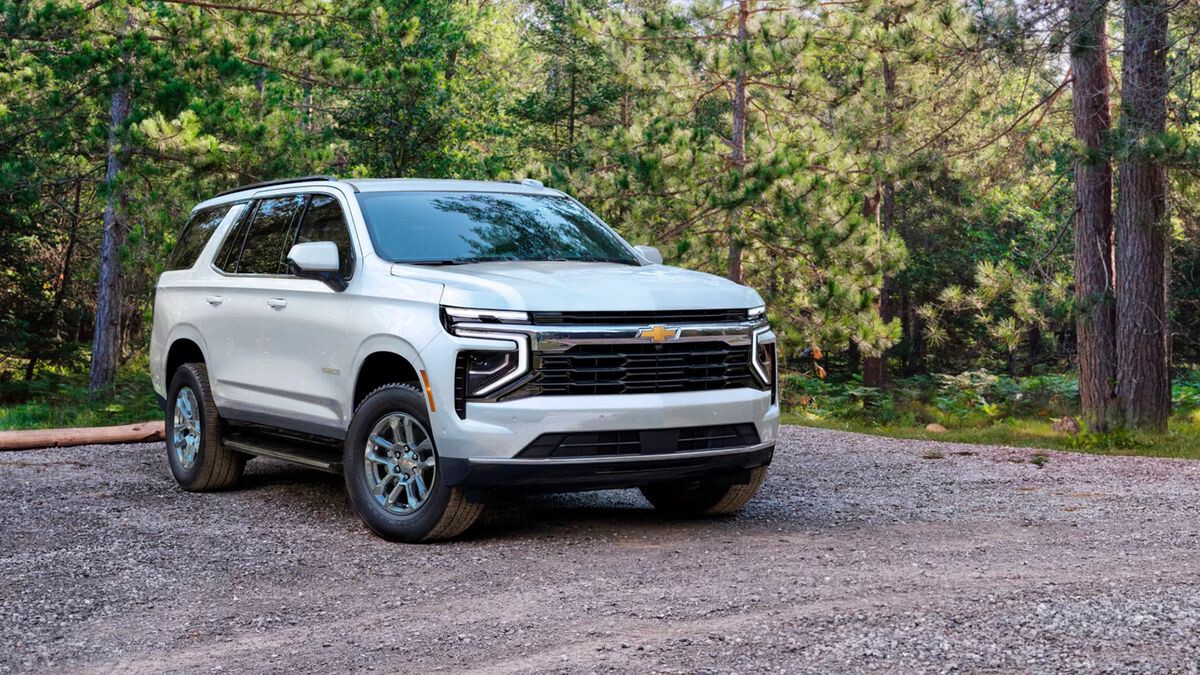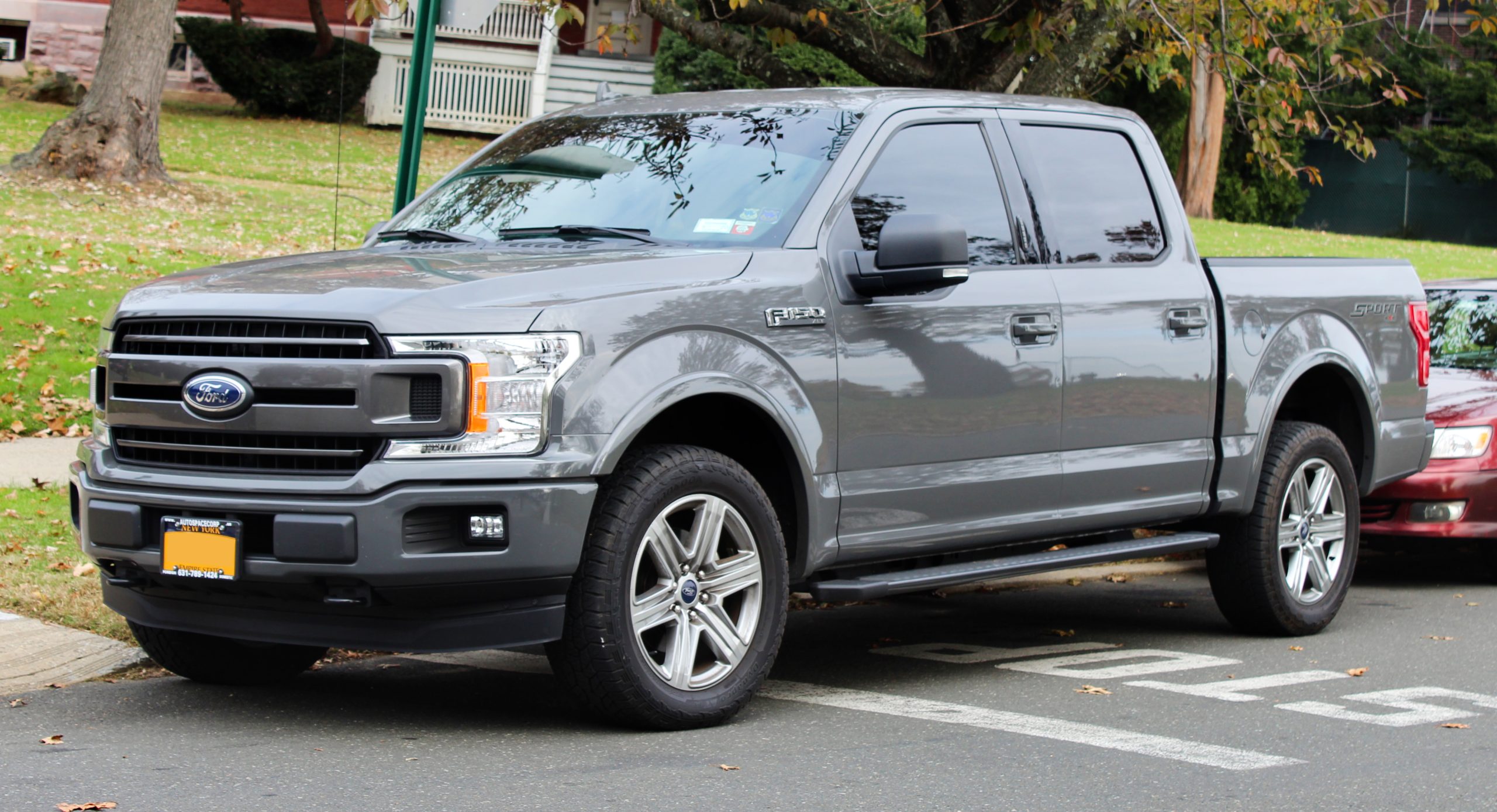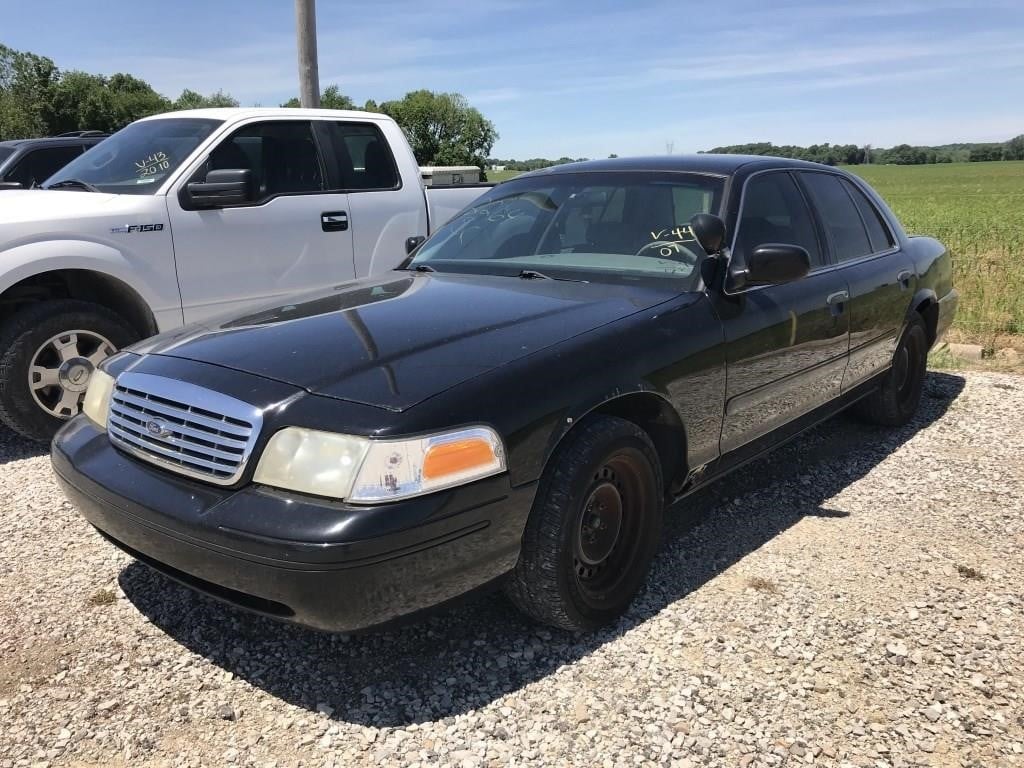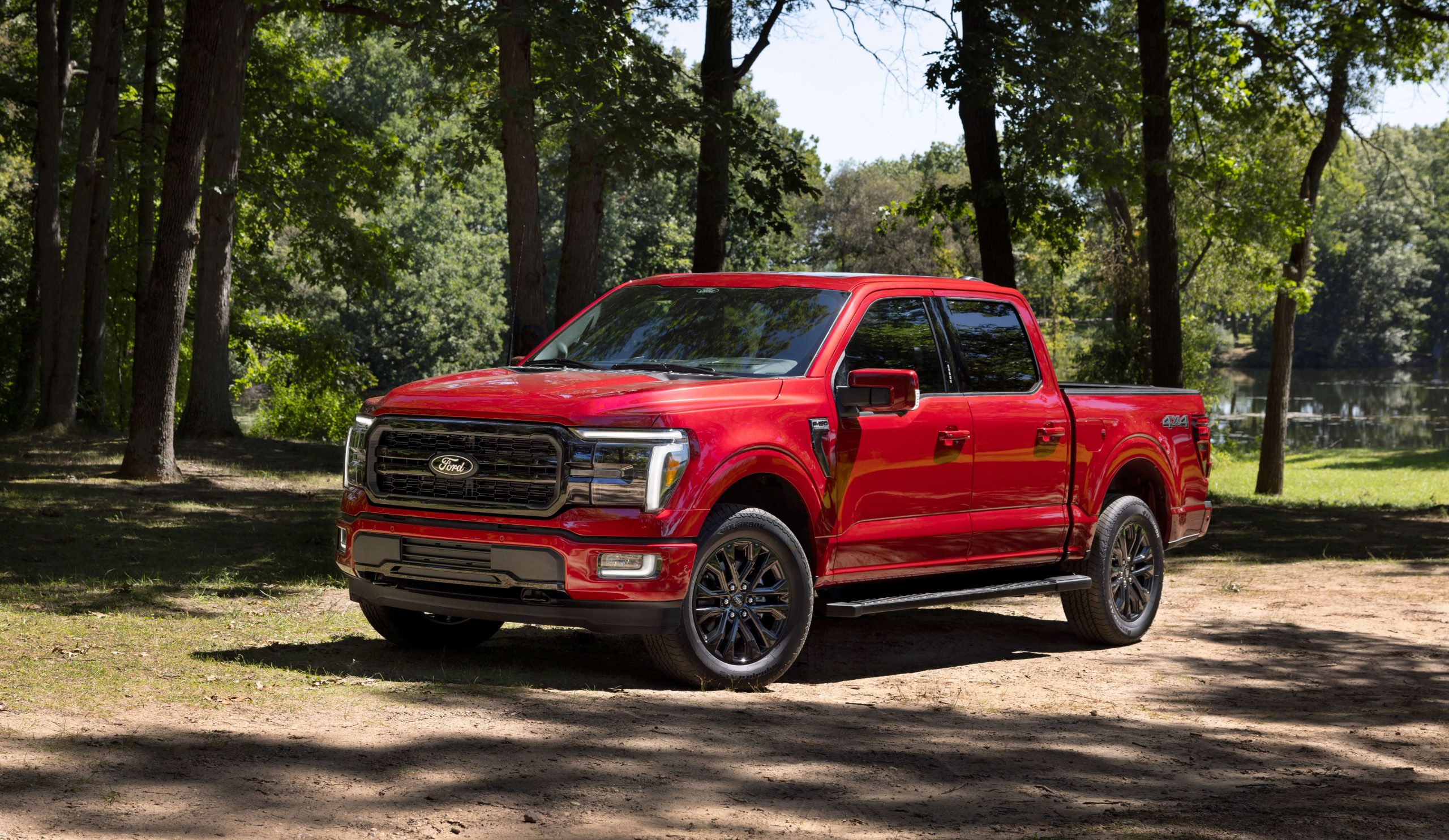In today’s rapidly evolving automotive landscape, vehicle security has become a paramount concern for manufacturers and consumers alike. The dichotomy between cars equipped with advanced remote kill features and those that remain vulnerable to theft represents a fascinating study in automotive technology and security philosophy.
Modern vehicles increasingly incorporate sophisticated anti-theft systems, including remote immobilization capabilities that can shut down a stolen vehicle from miles away, effectively stranding thieves and facilitating recovery.
These remote kill switches, often integrated with GPS tracking and cellular communication systems, represent the cutting edge of automotive security technology.
They allow law enforcement agencies, insurance companies, or vehicle owners to remotely disable critical vehicle functions such as the engine, fuel system, or ignition, rendering the stolen vehicle inoperable.
However, not all vehicles are created equal in this regard. Some older models, certain luxury vehicles with unique vulnerabilities, and specific makes known for their mechanical simplicity continue to operate even after being stolen, making them attractive targets for criminals.
This comprehensive analysis examines ten vehicles that exemplify these contrasting security approaches, exploring the technology behind remote kill features, the vulnerabilities that allow certain cars to keep running post-theft, and the implications for vehicle owners, law enforcement, and the automotive industry as a whole.
5 Cars With Remote Kill Features
These technologically advanced vehicles feature comprehensive remote shutdown systems that allow owners and law enforcement to immediately disable stolen cars through cellular networks and GPS tracking.
Their sophisticated engineering includes multiple kill switches that can independently shut down the engine, fuel system, or electrical components, making it nearly impossible for thieves to continue operating the vehicle once the remote command is activated.
Because of a built-in global-tracking device, OnStar already allows police to find stolen vehicles. Now, with permission of the owner, they’ll have the ability to have the engine turned off.
Modern vehicles equipped with these systems utilize encrypted communication protocols that prevent hackers from intercepting shutdown commands while ensuring legitimate users maintain complete control over their vehicles.
This Kill Switch temporarily disables your vehicle’s Starter (or optionally your Fuel Pump). It prevents it from being driven away by car thieves–EVEN IF they have your Key Fob, use a clone of your Key Fob, or use a Relay Attack! The integration of smartphone apps allows owners to monitor their vehicle’s status in real-time and activate emergency shutdown procedures from anywhere in the world, providing unprecedented peace of mind and security.
1. Tesla Model S (2012-Present)
The Tesla Model S stands as a pinnacle of automotive technology integration, featuring one of the most sophisticated remote kill systems in the industry.
Tesla’s approach to vehicle security goes far beyond traditional anti-theft measures, incorporating multiple layers of protection that make it nearly impossible for thieves to successfully steal and operate these electric vehicles.
At the heart of the Model S’s security system lies Tesla’s proprietary over-the-air connectivity, which maintains constant communication with the vehicle through cellular networks.
This connection enables Tesla’s security team to monitor vehicle status in real-time and respond immediately to theft reports. When a Model S is reported stolen, Tesla can remotely access the vehicle’s computer systems and initiate a controlled shutdown sequence that gradually reduces power to the drive motors, eventually bringing the vehicle to a safe stop.
The remote kill functionality in the Model S operates through several mechanisms. The primary method involves cutting power to the high-voltage battery system that feeds the electric motors.
Unlike traditional vehicles that can potentially be hot-wired or bypassed, the Model S’s electric drivetrain requires constant communication with the vehicle’s central computer system.
When Tesla initiates a remote kill command, the battery management system receives instructions to cease power delivery to the drive units, effectively immobilizing the vehicle.

Additionally, Tesla’s Mobile Connector and Supercharger network integration means that stolen Model S vehicles cannot be charged at Tesla’s proprietary charging stations.
The company can blacklist stolen vehicles from accessing their charging infrastructure, severely limiting the vehicle’s operational range. This feature is particularly effective because Tesla’s Supercharger network represents the most comprehensive fast-charging infrastructure for electric vehicles.
The Model S also incorporates GPS tracking with unprecedented accuracy, updating location data every few seconds when the vehicle is in motion.
This constant monitoring allows law enforcement to track stolen vehicles in real-time, while Tesla’s security team can provide precise location information to authorities.
The system can even predict the vehicle’s likely destination based on remaining battery charge and nearby charging stations. Tesla’s mobile app integration adds another layer of security and remote control capability.
Owners can monitor their vehicle’s status, receive instant notifications of unauthorized access attempts, and even observe interior activity through the vehicle’s built-in cameras. If a theft occurs, owners can immediately notify Tesla through the app, triggering the remote kill sequence within minutes.
The effectiveness of Tesla’s remote kill system has been demonstrated in numerous real-world theft scenarios. Law enforcement agencies report that stolen Tesla vehicles are typically recovered within hours rather than days or weeks, largely due to the company’s ability to remotely disable the vehicle and provide precise tracking information.
The psychological deterrent effect is equally significant, as potential thieves increasingly recognize that stealing a Tesla is likely to result in rapid apprehension.
2. BMW X5 (2019-Present)
BMW’s latest generation X5 represents the German automaker’s commitment to advanced vehicle security through its ConnectedDrive system and BMW Digital Key technology.
The X5’s remote kill capabilities are integrated into BMW’s comprehensive telematics platform, which combines GPS tracking, cellular communication, and remote vehicle control into a sophisticated anti-theft system.
The BMW X5’s remote immobilization system operates through the vehicle’s iDrive infotainment system and engine management computer. When activated, the system can prevent the engine from starting, disable the fuel pump, or shut down the ignition system entirely.
BMW’s approach is particularly sophisticated because it integrates with their Emergency Call and Concierge Services, meaning that theft reports can be processed and acted upon immediately through BMW’s customer service infrastructure.
BMW’s remote kill functionality in the X5 utilizes multiple communication pathways to ensure reliability. The primary system operates through 4G LTE cellular connectivity, while backup systems can function through satellite communication in areas with poor cellular coverage.
This redundancy ensures that remote kill commands can be executed even in remote locations where thieves might attempt to hide stolen vehicles.
The X5’s security system also incorporates BMW’s Advanced Car Eye technology, which uses multiple cameras and sensors to monitor the vehicle’s surroundings.

These cameras can capture images of potential thieves and transmit them to BMW’s security monitoring center, providing valuable evidence for law enforcement.
The system can even detect suspicious behavior around the vehicle, such as individuals attempting to peer through windows or test door handles.
One of the most innovative features of the BMW X5’s anti-theft system is its integration with the owner’s smartphone through the BMW Digital Key.
This system allows owners to lock, unlock, and start their vehicle using their mobile device, but it also enables remote monitoring and control. If the vehicle is stolen, owners can immediately disable the Digital Key functionality and activate the remote kill system through the BMW ConnectedDrive app.
The X5’s remote kill system is designed to operate gradually and safely. Rather than immediately shutting down the engine while the vehicle is in motion, the system typically waits for the vehicle to come to a stop or reduces engine power gradually to allow the driver to safely pull over.
This approach minimizes the risk of accidents while still effectively immobilizing the stolen vehicle. BMW has also implemented geofencing capabilities in the X5, allowing owners to set virtual boundaries for their vehicle. If the X5 is moved outside these predetermined areas without authorization, the system automatically alerts the owner and can initiate remote kill procedures.
This feature is particularly useful for preventing theft from driveways or parking lots. The effectiveness of BMW’s remote kill system has been enhanced through partnerships with law enforcement agencies worldwide.
BMW maintains dedicated security response teams that work directly with police departments to track and recover stolen vehicles, providing real-time location data and technical support for remote immobilization procedures.
3. OnStar-Equipped Chevrolet Tahoe (2015-Present)
General Motors’ OnStar system represents one of the most established and widely deployed remote kill technologies in the automotive industry. The Chevrolet Tahoe, as one of GM’s flagship SUVs, showcases the full capabilities of OnStar’s Stolen Vehicle Assistance program, which has been refined over more than two decades of operation.
OnStar’s remote kill functionality in the Tahoe operates through a comprehensive telematics system that combines GPS tracking, cellular communication, and direct integration with the vehicle’s engine management system.
When a Tahoe is reported stolen, OnStar advisors can remotely access the vehicle’s computer systems and initiate what they call a “remote ignition block,” which prevents the engine from restarting once it’s turned off.
The genius of OnStar’s approach lies in its methodical and safety-focused execution. Rather than immediately shutting down a moving vehicle, which could cause accidents, OnStar waits for the optimal moment to disable the Tahoe.
The system monitors the vehicle’s speed, location, and driving patterns to determine the safest time to prevent a restart. This typically occurs when the thief stops for fuel, food, or attempts to abandon the vehicle.
OnStar’s integration with the Tahoe’s electrical systems goes beyond simple engine immobilization. The system can also activate the vehicle’s horn and lights to attract attention, making it easier for law enforcement to locate the stolen vehicle. This feature has proven particularly effective in crowded areas where visual identification might be challenging.

The Chevrolet Tahoe’s OnStar system includes real-time GPS tracking with location updates transmitted every few seconds. This constant monitoring enables OnStar advisors to provide law enforcement with turn-by-turn directions to the location of the stolen vehicle.
The system’s accuracy has been refined to within a few meters, making vehicle recovery operations highly efficient. One of the most valuable aspects of OnStar’s service is their direct relationship with law enforcement agencies.
OnStar maintains dedicated law enforcement phone lines and has established protocols with police departments across North America. When a Tahoe is stolen, OnStar can immediately begin coordinating with local authorities, providing real-time tracking information and technical support for recovery operations.
The Tahoe’s OnStar system also incorporates crash detection technology, which can determine if a stolen vehicle has been involved in an accident.
This information is immediately relayed to emergency services, ensuring that any injuries are promptly treated while also facilitating vehicle recovery.
OnStar has continuously evolved its remote kill capabilities based on real-world experience and criminal adaptation. Modern Tahoe models include enhanced anti-tampering measures that make it extremely difficult for thieves to disable the OnStar system.
The antennas and communication modules are hidden throughout the vehicle and include backup systems that activate if the primary components are damaged or removed.
The psychological impact of OnStar’s reputation has also contributed to the Tahoe’s theft deterrence. Many potential thieves are aware of OnStar’s capabilities and specifically avoid targeting GM vehicles equipped with the system.
This reputation effect extends beyond individual vehicle protection to contribute to overall theft reduction in communities with high OnStar adoption rates.
4. Mercedes-Benz S-Class (2021-Present)
Mercedes-Benz has integrated its mbrace system with advanced remote kill capabilities in the latest S-Class, representing the pinnacle of luxury vehicle security technology.
The S-Class’s approach to theft prevention combines traditional German engineering excellence with cutting-edge digital security measures, creating a multi-layered defense system that makes unauthorized vehicle operation extremely difficult.
The S-Class’s remote immobilization system operates through Mercedes-Benz’s mbrace connected services platform, which maintains constant communication with the vehicle through cellular networks and satellite connections.
The system can remotely disable various vehicle functions, including the engine, transmission, and even individual door locks, providing multiple points of intervention depending on the specific theft scenario.
Mercedes-Benz’s approach to remote kill functionality emphasizes precision and control. The S-Class system can selectively disable specific vehicle functions rather than completely shutting down all systems simultaneously.
For example, the system might first disable the transmission while leaving the engine running, allowing a thief to safely pull over before complete immobilization occurs. This graduated approach minimizes safety risks while maximizing the likelihood of vehicle recovery.
The S-Class incorporates Mercedes-Benz’s latest biometric security features as part of its comprehensive anti-theft system. The vehicle can recognize authorized users through fingerprint scanning, facial recognition, and voice authentication.
If someone attempts to operate the vehicle without proper biometric authorization, the system can automatically initiate remote kill procedures even without external commands.

Mercedes-Benz has also implemented what they call “intelligent tracking” in the S-Class, which goes beyond simple GPS location reporting. The system analyzes driving patterns, route selections, and behavioral indicators to determine if the vehicle is being operated by an authorized user.
Unusual driving behaviors, such as erratic speed changes, suspicious route selections, or attempts to drive to known criminal areas, can trigger automatic alerts and remote intervention.
The S-Class’s remote kill system includes integration with Mercedes-Benz’s global security monitoring centers, which operate 24/7 to respond to theft alerts.
These centers are staffed by trained security professionals who can assess theft situations and coordinate with law enforcement agencies worldwide. The system’s global reach means that stolen S-Class vehicles can be tracked and recovered even if they cross international borders.
One particularly innovative feature of the S-Class’s security system is its ability to create a “digital breadcrumb trail” that can be used for forensic analysis even after vehicle recovery.
The system continuously logs detailed information about vehicle operation, including steering inputs, acceleration patterns, and route selections. This data can be invaluable for law enforcement investigations and insurance claims processing.
The S-Class also incorporates Mercedes-Benz’s Car-to-X communication technology, which allows the vehicle to communicate with other Mercedes-Benz vehicles and infrastructure systems.
If an S-Class is stolen, nearby Mercedes-Benz vehicles can automatically report its location and movements, creating a distributed tracking network that makes evasion extremely difficult. Mercedes-Benz has designed the S-Class’s remote kill system to be tamper-resistant through physical and digital security measures.
The communication modules are integrated throughout the vehicle’s electrical system and include multiple redundant pathways. Even sophisticated thieves with technical knowledge would need extensive time and specialized equipment to disable the system completely.
Also Read: 5 Brands Investing in Theft-Proof Tech and 5 That Haven’t Upgraded in Years
5. Ford F-150 with FordPass (2018-Present)
Ford’s implementation of remote kill technology in the F-150 through its FordPass Connect system represents a practical approach to truck security that balances functionality with user-friendliness.
As America’s best-selling truck, the F-150’s security features have been designed to address the specific challenges associated with pickup truck theft, including the vehicle’s popularity among thieves and its common use in commercial applications.
The F-150’s remote kill system operates through Ford’s SYNC Connect technology, which provides cellular connectivity and enables remote vehicle control through the FordPass smartphone app.
The system can remotely disable the engine, prevent restart, and activate various alert systems to aid in vehicle recovery. Ford’s approach emphasizes ease of use for vehicle owners while maintaining sophisticated backend security capabilities.
FordPass Connect in the F-150 includes real-time GPS tracking with location updates transmitted every 30 seconds when the vehicle is in motion. The system’s accuracy has been optimized for both urban and rural environments, recognizing that F-150 trucks are often used in remote locations where cellular coverage may be limited.
Ford has implemented satellite backup communication systems to ensure tracking capability even in areas with poor cellular service. One of the unique aspects of Ford’s remote kill implementation is its integration with the F-150’s towing and payload monitoring systems.
The truck can detect when it’s being loaded onto a trailer or tow truck, which is a common method used by thieves to transport stolen vehicles. When unusual towing activity is detected, the system can automatically alert the owner and initiate tracking procedures.

The F-150’s FordPass system includes geofencing capabilities that are particularly useful for commercial fleet applications. Business owners can set virtual boundaries for their trucks and receive immediate alerts if vehicles are moved outside authorized areas.
The system can automatically initiate remote kill procedures for vehicles that leave designated zones without proper authorization. Ford has also implemented what they call “smart scheduling” for the F-150’s remote kill system.
The system learns the owner’s typical usage patterns and can automatically detect when the vehicle is being operated outside normal parameters.
For example, if an F-150 is typically used during business hours but is suddenly active at 3 AM, the system can automatically alert the owner and prepare for potential remote intervention.
The F-150’s security system includes integration with Ford’s commercial fleet management services, which provide additional monitoring and control capabilities for business users.
Fleet managers can remotely monitor multiple vehicles simultaneously and initiate coordinated responses if multiple trucks are stolen or compromised. Ford has designed the F-150’s remote kill system to minimize impact on legitimate vehicle operations.
The system includes multiple authentication methods to prevent accidental activation, and remote kill commands require confirmation from both the vehicle owner and Ford’s security monitoring center.
This dual-authorization approach prevents system abuse while ensuring rapid response to legitimate theft situations. The effectiveness of Ford’s remote kill system has been enhanced through partnerships with law enforcement agencies and private security firms.
Ford maintains a dedicated theft response team that works directly with police departments to coordinate vehicle recovery operations, providing technical support and real-time tracking information.
5 Cars That Keep Running After Theft
These traditional vehicles continue operating with basic security systems that offer no remote shutdown capability, leaving owners completely powerless once thieves successfully bypass their conventional locks and alarms.
Their outdated engineering relies solely on physical deterrents, such as steering wheel locks and simple electronic immobilizers, which experienced criminals can easily overcome using readily available tools and techniques.
Without cellular connectivity or GPS tracking integration, these vehicles become invisible once stolen, making recovery extremely difficult. The absence of remote kill switches means that even when owners discover their vehicle has been stolen, they have no technological recourse to prevent its continued operation or track its location.
To prevent vehicle theft, opt for a remote battery kill switch like this one from Cllena. When installed properly, a remote kill switch will ensure that your vehicle cannot be started by any means.
This fundamental security gap allows thieves unlimited time to strip valuable parts, sell the vehicle, or use it in additional criminal activities, making these cars particularly attractive targets for organized theft operations that understand their vulnerabilities.
1. 1990s Honda Civic (1992-2000)
The Honda Civic from the 1990s represents the epitome of automotive vulnerability to theft, earning an unfortunate reputation as one of the most stolen vehicles in automotive history.
These particular model years of the Civic lack virtually any modern anti-theft technology, making them incredibly easy targets for criminals with even basic automotive knowledge.
The fundamental vulnerability of the 1990s Honda Civic stems from its simple mechanical design and the widespread availability of key blanks and lock picking tools.
Honda used relatively basic lock cylinders during this era, and the company’s decision to use similar key patterns across multiple model years means that a single key can often operate multiple vehicles.
This interchangeability has made it possible for thieves to obtain master keys or use simple lock picking techniques to gain access. Once inside a 1990s Civic, thieves can employ various methods to start the engine without the original key.
The ignition system in these vehicles relies on basic electrical connections that can be bypassed using simple tools like screwdrivers or specialized “shaved keys.” The steering column can be easily accessed by removing a few plastic panels, exposing the ignition switch mechanism that can be manipulated to start the engine.
The absence of an engine immobilizer system in 1990s Civics means that once the ignition is bypassed, the engine will run normally without any security restrictions.
Unlike modern vehicles that require computer authentication between the key and engine management system, these older Civics operate on purely mechanical and basic electrical principles. The fuel pump, ignition system, and starter motor will function normally as long as the proper electrical connections are made.

Another significant vulnerability of the 1990s Honda Civic is the lack of any tracking or monitoring systems. These vehicles have no GPS capability, no cellular communication, and no remote monitoring infrastructure.
Once stolen, a Civic from this era essentially disappears into the criminal ecosystem with no electronic trail to follow. Law enforcement must rely on traditional investigative methods and chance sightings to recover these vehicles.
The popularity of 1990s Civics among car thieves is also driven by the strong black market demand for their parts. Honda’s reputation for reliability and the widespread ownership of these vehicles has created a robust market for stolen Civic components.
Thieves can quickly strip a stolen Civic and sell individual parts for more money than the intact vehicle might bring. Common targets include engines, transmissions, airbags, and electronic components.
The simplicity of the 1990s Civic’s design also makes it attractive to joyriders and amateur criminals who might be intimidated by more sophisticated vehicles.
The techniques required to steal these cars can be learned quickly and don’t require expensive specialized tools or extensive technical knowledge. This accessibility has contributed to the Civic’s status as a “gateway” vehicle for aspiring car thieves.
Honda’s approach to security in the 1990s reflected the automotive industry’s general attitude toward theft prevention during that era. Anti-theft technology was considered a luxury feature rather than a standard safety requirement, and manufacturers prioritized cost reduction over security enhancement.
The result was vehicles like the Civic that offered excellent transportation value but minimal protection against theft. The lasting impact of the 1990s Civic’s vulnerability has influenced Honda’s subsequent approach to vehicle security.
The company learned valuable lessons about the importance of anti-theft technology and has since implemented comprehensive security systems in its modern vehicles. However, the hundreds of thousands of vulnerable 1990s Civics that remain on the road continue to be attractive targets for thieves.
2. Jeep Wrangler (1997-2006 TJ Series)
The Jeep Wrangler TJ series, produced from 1997 to 2006, represents a unique category of vehicles that continue to operate after theft due to their deliberately simple design philosophy and mechanical accessibility.
Unlike other vehicles that might be vulnerable due to outdated security technology, the Wrangler TJ’s susceptibility to theft stems from its utilitarian design approach and the removable nature of many of its components.
The TJ Wrangler’s vulnerability begins with its soft-top convertible design, which provides minimal physical security. The canvas or vinyl soft tops can be easily cut or unzipped, allowing thieves to gain entry without triggering traditional alarm systems or leaving obvious signs of forced entry.
Even hardtop models often feature removable door panels and windows, creating multiple access points that don’t require sophisticated break-in techniques.
Once inside a TJ Wrangler, thieves encounter a relatively simple ignition system that lacks the sophisticated immobilizer technology found in modern vehicles.
The ignition switch can be accessed by removing basic interior panels, and the electrical connections required to start the engine can be bypassed using common tools.
The Wrangler’s utilitarian design philosophy means that many components are intentionally accessible for maintenance and repair, inadvertently making them accessible to thieves as well.
The TJ Wrangler’s transfer case and four-wheel-drive system add another layer of complexity to theft scenarios. These vehicles can be driven in conditions and locations where other stolen vehicles might become stuck or immobilized.
Thieves can use the Wrangler’s off-road capability to access remote areas where the vehicle can be hidden, stripped for parts, or used for illegal activities away from populated areas and law enforcement.

Jeep’s design philosophy for the TJ Wrangler emphasized simplicity and repairability, which unfortunately also makes these vehicles easier to steal and modify.
The modular nature of many Wrangler components means that thieves can quickly remove valuable parts like doors, fenders, and even entire roof assemblies.
This modularity has created a thriving black market for Wrangler parts, making theft profitable even when the complete vehicle cannot be resold. The TJ Wrangler lacks many of the passive security features that were becoming standard in other vehicles during its production run.
There are no proximity sensors, no sophisticated alarm systems, and no integration with tracking or monitoring services. The vehicle’s computer systems are basic and primarily focused on engine management rather than security functions.
Another factor contributing to the TJ Wrangler’s vulnerability is the enthusiast community’s modification culture. Many Wrangler owners extensively modify their vehicles, often bypassing or removing original equipment in favor of aftermarket components.
This modification culture has created extensive knowledge about Wrangler systems and weaknesses, information that unfortunately becomes available to potential thieves as well.
The Wrangler TJ’s popularity among outdoor enthusiasts and its association with recreational activities also make it an attractive target for specific types of theft.
These vehicles are often stolen for use in off-road crimes, illegal dumping, or other activities where their rugged capability provides advantages over conventional vehicles.
The Wrangler’s ability to access remote areas makes it valuable for criminals who need to transport illegal materials or access locations where other vehicles cannot go.
Jeep has acknowledged the security limitations of the TJ Wrangler in their subsequent designs, implementing more sophisticated anti-theft systems in newer models.
However, the fundamental design philosophy that made the TJ appealing to enthusiasts, simplicity, accessibility, and modularity, inherently conflicts with modern vehicle security requirements.
3. Ford Crown Victoria Police Interceptor (1998-2011)
The Ford Crown Victoria Police Interceptor presents a fascinating paradox in automotive security a vehicle specifically designed for law enforcement that remains surprisingly vulnerable to theft and continues to operate after unauthorized access.
This vulnerability stems from the unique requirements of police work and the specific modifications made to accommodate law enforcement needs.
Police Interceptor Crown Victorias were designed with rapid access and emergency operation capabilities that inadvertently create security vulnerabilities. Many units feature simplified ignition systems that allow officers to quickly start and operate the vehicle in emergencies.
These modifications often bypass or simplify traditional security measures, making the vehicles more accessible to unauthorized users who understand police vehicle systems.
The Crown Victoria’s robust mechanical design, while advantageous for police work, also contributes to its post-theft operability. These vehicles were built to withstand harsh use conditions and continue operating even with damage or system failures.
The simple, reliable V8 engine and transmission combination can continue running even if some security or monitoring systems are disabled or damaged during theft.
Many decommissioned Police Interceptors retain their emergency equipment and wiring, which can be exploited by knowledgeable thieves. The additional electrical systems installed for police radios, lights, and other equipment often create alternative pathways that can be used to bypass standard ignition security.
The complex wiring harnesses can provide multiple methods for accessing ignition power without using the original key. The Crown Victoria Police Interceptor’s design prioritized functionality over security in many respects.
Features like reinforced door frames, heavy-duty locks, and tamper-resistant components were intended to protect the vehicle during police operations, but they don’t necessarily prevent theft by individuals with specific knowledge of police vehicle systems. The modifications made for police use often create new vulnerabilities while addressing operational requirements.

Fleet maintenance practices for police vehicles also contribute to security vulnerabilities. Many departments use master keys or simplified key systems to facilitate maintenance and officer vehicle assignments.
This approach, while operationally efficient, can create opportunities for unauthorized access if keys are compromised or if individuals gain knowledge of fleet key systems.
The Crown Victoria’s popularity in the used car market has led to widespread familiarity with its systems and vulnerabilities. Mechanics, former police officers, and automotive enthusiasts have extensive knowledge about these vehicles, and unfortunately, this information can be exploited by criminals.
The availability of service manuals, parts, and technical information makes it easier for thieves to understand and exploit the vehicle’s weaknesses.
Decommissioned Police Interceptors often lack some of the security features found in civilian Crown Victoria models. Police departments sometimes remove or disable certain systems during the decommissioning process, inadvertently creating additional vulnerabilities.
Anti-theft systems, immobilizers, or tracking equipment might be removed or deactivated, leaving the vehicle more vulnerable to theft. The psychological aspect of Crown Victoria theft is also significant.
The vehicle’s association with law enforcement can provide cover for criminals, as stolen Police Interceptors might not attract immediate attention from the public or other law enforcement officers. This temporary invisibility can allow thieves more time to escape or dispose of the stolen vehicle.
The Crown Victoria’s robust construction and reliable operation mean that stolen vehicles can continue running for extended periods without maintenance or care.
The vehicle’s design tolerances and durable components allow it to operate under adverse conditions that might disable other stolen vehicles, extending the time available for criminal use.
4. Mitsubishi Eclipse (1995-1999)
The second-generation Mitsubishi Eclipse, particularly models from 1995 to 1999, represents a category of sports cars that remain operational after theft due to a combination of simple security systems and strong aftermarket support.
These vehicles have earned an unfortunate reputation in the theft community due to their desirable performance characteristics and relative ease of unauthorized access.
The Eclipse’s vulnerability stems primarily from its basic anti-theft technology, which was typical of mid-1990s Japanese sports cars. The ignition system relies on simple mechanical locks and basic electrical connections that can be bypassed using common tools and techniques.
Unlike luxury vehicles of the same era, the Eclipse lacks sophisticated immobilizer systems or advanced security features that might prevent post-theft operation. Mitsubishi’s approach to the Eclipse emphasized performance and affordability over security features.
The company focused on delivering turbocharged power and sports car styling at an accessible price point, which meant that expensive security technology was often omitted to control costs.
This design philosophy created vehicles that were attractive to both legitimate buyers and criminals seeking high-performance cars for illegal activities.
The Eclipse’s popularity in the tuner and street racing communities has created extensive knowledge about the vehicle’s systems and vulnerabilities.
Enthusiasts have developed a detailed understanding of Eclipse electronics, engine management, and security systems through modification and repair activities.
Unfortunately, this technical knowledge can be exploited by criminals who understand how to quickly disable security systems and modify ignition circuits. Once stolen, Eclipse vehicles can continue operating normally due to their robust mechanical design and simple engine management systems.
The 4G63 turbocharged engine used in many Eclipse models is known for its reliability and tolerance for abuse, meaning that stolen vehicles can be driven hard without immediate mechanical failure. This durability extends the useful life of stolen vehicles and makes them valuable for extended criminal use.

The Eclipse’s strong aftermarket parts market also contributes to its attractiveness as a theft target. Stolen vehicles can be quickly stripped for valuable components like turbochargers, intercoolers, engine management computers, and body panels.
The high demand for Eclipse performance parts creates a ready market for stolen components, making theft profitable even when complete vehicle resale isn’t possible.
Mitsubishi’s security approach in the 1990s reflected the company’s focus on mechanical reliability rather than electronic sophistication. The Eclipse’s systems were designed to be simple, durable, and repairable, characteristics that unfortunately also make them easier to compromise.
The lack of complex electronic security systems means that traditional hot-wiring techniques remain effective on these vehicles. The Eclipse’s manual transmission preference among enthusiasts also creates security vulnerabilities.
Manual transmissions are generally easier to start without keys compared to automatic transmissions, as they don’t require complex electronic control systems for operation. Thieves familiar with manual transmission vehicles can often start and operate stolen Eclipses using basic mechanical knowledge.
The vehicle’s compact size and performance capability make it attractive for specific types of criminal activity. Stolen Eclipses are often used in street racing, drug trafficking, and other crimes where speed and maneuverability are advantages.
The car’s ability to quickly accelerate and navigate through traffic makes it valuable for criminals seeking to evade law enforcement. The Eclipse’s relatively simple electrical system also makes it easier to disable tracking or monitoring devices that might be installed aftermarket.
Unlike modern vehicles with integrated security systems, the Eclipse’s basic wiring allows knowledgeable individuals to quickly identify and disable add-on security equipment.
5. Chevrolet Silverado (1999-2006)
The Chevrolet Silverado from 1999 to 2006 represents a significant vulnerability in the full-size pickup truck segment, combining the inherent attractiveness of trucks to thieves with relatively simple security systems that can be easily bypassed.
These vehicles continue to operate after theft due to their robust mechanical design and the absence of sophisticated immobilizer technology. The Silverado’s vulnerability begins with its widespread popularity and the resulting familiarity among potential thieves.
As one of America’s best-selling trucks, the Silverado’s systems and weaknesses are well-known throughout the automotive community. This familiarity extends to criminal networks, where knowledge about bypassing Silverado security systems is commonly shared and developed. General Motors’ approach to truck security during this era prioritized simplicity and reliability over advanced anti-theft technology.
The Silverado’s ignition system uses basic mechanical locks and straightforward electrical connections that can be bypassed using common tools. Unlike the company’s luxury vehicles, which were beginning to incorporate more sophisticated security systems, the Silverado retained simple, cost-effective approaches to access control.
The truck’s robust LS-series V8 engines contribute to its post-theft operability by providing reliable power even under adverse conditions. These engines were designed for durability and can continue operating even with damaged or bypassed security systems.
The simple engine management computers used in these trucks focus primarily on performance and emissions rather than security functions. Silverado trucks from this era often lack the passive security features that were becoming standard in passenger cars.
There are no proximity sensors, no sophisticated alarm systems, and no integration with monitoring services. The truck’s security relies primarily on physical locks and basic electrical systems that can be overcome with relatively simple techniques.

The popularity of the Silverado in commercial and fleet applications has created additional security vulnerabilities. Many businesses use simplified fleet key systems or master keys to facilitate vehicle management, creating opportunities for unauthorized access if these systems are compromised.
Fleet vehicles often have additional wear on locks and ignition systems, making them easier to bypass. The Silverado’s strong aftermarket parts market makes it an attractive target for theft-to-order operations.
Valuable components like engines, transmissions, catalytic converters, and airbags can be quickly removed and sold through established networks. The truck’s modular design and accessible components make it possible for thieves to strip valuable parts rapidly.
The vehicle’s capability and utility also make it attractive for specific types of criminal activity. Stolen Silverados are often used for transporting stolen goods, illegal dumping, or other crimes where the truck’s payload and towing capacity provide advantages.
The truck’s ability to access construction sites, rural areas, and other locations makes it valuable for various illegal activities. Chevrolet’s focus on mechanical simplicity in the Silverado means that many security bypass techniques developed for older GM vehicles remain effective.
The company’s evolutionary approach to truck design meant that many systems carried over from previous generations, including vulnerabilities that had been identified and exploited by criminals.
The Silverado’s manual transmission options also create additional security vulnerabilities. Manual transmission trucks are generally easier to start without proper authorization, as they lack the complex electronic control systems required for automatic transmissions.
Thieves familiar with manual transmission operation can often bypass ignition security more easily. The widespread availability of Silverado service information and parts has inadvertently assisted criminal activities.
The truck’s popularity among enthusiasts and professional mechanics has led to extensive documentation of its systems, including information that can be used to bypass security measures.
This technical knowledge, combined with the ready availability of replacement parts, makes Silverado theft and subsequent operation relatively straightforward for knowledgeable criminals.
Also Read: 5 Brands Investing in Theft-Proof Tech and 5 That Haven’t Upgraded in Years

